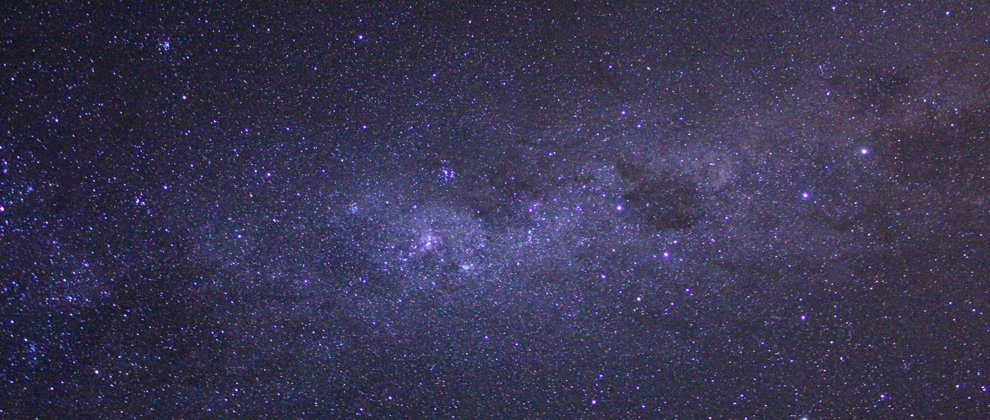by Max Stainkampf | @maxstainkamph
Hoping to find things that have not yet been altered by humanity, we are shifting our gaze to the heavens. Our ability to read the stars has had a monumental impact on our development. Various civilisations have observed the stars, some believing them gods, others left wonders behind the Stonehenge in England or the Nazca Lines in Peru.
Melbourne’s long history of astronomy began in 1862, with the Melbourne Observatory for 20 years housing the world’s largest steerable telescope—which played a vital role in finishing the international ‘Carte de Ciel’, or ‘Map of the Stars’.
It’s believed the first astronomers in the Middle East were priests known as Chaldeans, now called astrologers. Tiana Chaplin is one of them, she continues to see the spirituality in the stars. She says the roles of astronomer and astrologer split in the late 14th century, and by the 18th century the scientific community cast astrology away from science.
Chaplin acknowledges the popular disinterest in astrology, but cites inaccuracies in horoscopes as the cause. “Under the circumstances, astrologers are tasked with putting together a short, generic paragraph based on only a single planet—the sun and its movements around earth,” Chaplin says. “I call this ‘Fast Food Astrology’, when in fact there is a 12 course smorgasbord on offer.”
Astrologers use a natal chart, which shows where the planets, moon and the sun are in relation to the star signs. Chaplin says people have a star sign and a moon sign. The sun represents the conscious self and the ego; the moon the subconscious self; and the planets each take on many different meanings.
“I will admit while I have become a genuine believer over the years, part of me remains a skeptic. I think that’s healthy. It’s true we have little ‘proof’ astrology works, but I am convinced this mysterious, ancient art hold substance and truth,” says Chaplin. But not everyone agrees: Perry Vlahos is dismissive of astrology, saying “it get absolutely no credence from the scientific community. I prefer a telescope to a horror-scope.”
Vlahos writes the astronomy column for The Age, and was President of the Astronomical Society of Victoria (ASV) for nine years and its 850-plus members.
“Astronomy has given us insight into where we are and who we are,” says Vlahos. “We have factual, scientific insight into the world, instead of explaining it through the gods of Mount Olympus.”
Vlahos believes “unfathomable” events like the Churyumov-Gerasimenko comet landing in November last year reignites peoples’ interest in the cosmos. “Every time we do something spectacular it fires the imagination of the young, and there is the next lot of scientists,” says Vlahos, who believes people have begun stargazing due to an “innate interest in finding our place in the universe”. It also helps get away from life.
Richard Johnston, an IT coordinator and long-time stargazer, says he was brought up with a telescope from a young age. “It’s fascinating… just the thought of it all,” he says. “We’re very casual stargazers, I do a bit of reading of Cosmos… it’s just really cool.”
He stargazes with his three children but doesn’t see it as a social activity. “It’s a solo activity,” he says. “That internal reflection is personal. But it’s a bit of both. I shared it with my dad and I’m sharing it now with my kids, which is really cool.”
Light pollution has made stargazing almost impossible in the centre of major cities and some suburbs. Most of the “interesting bits” – as Vlahos calls them – are invisible to the naked eye. “The natural enemy of the mouse is the cat, and the natural enemy of the astronomer is the electric lamp,” Vlahos says.
“In the city it’s pretty awful,” says Johnston, who finds the same problem. “We don’t see a lot. Our telescope certainly helps a lot, but looking for the Milky Way, a lot of stars, there’s just no hope.” Vlahos notes only three stars of the Southern Cross can be seen from central Melbourne. The Melbourne and Sydney observatories have not done practical stargazing for over 120 years.
Many try to escape the light. The Astronomical Society of Victoria runs a “Dark Sky Site” in country Victoria for astronomers to escape light pollution. Likewise, many of Johnston’s summer nights were spent looking up at stars in remote parts of Victoria with friends and family.
Under the “vastness” it’s easy to think of those who looked at same constellations thousands of years before, and how much has changed.
“Lots of things are no longer the same as they were,” Vlahos said, “yet you can walk out your frontfront door and the sky is as pristine as it was 3000 years ago.”
Pictures by Nathan Brown


